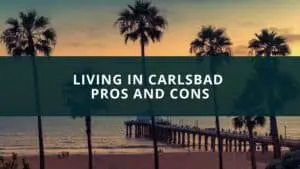City Imperial is a small town located in the southern part of California. The town is home to a population of just over 1,000 people and is situated in a rural area. Despite its small size, the town has a number of amenities and attractions that make it a great place to live. There are a number of shops and restaurants located in the town, as well as a number of parks and recreational facilities. The town also has its own school district, which serves the town’s students.
Quick navigation
1. Calexico
Calexico, California, is a city in Imperial County, on the border with Mexico. The city is known for its Hispanic culture and its proximity to the Mexican city of Mexicali. Calexico has a population of about 38,000 people. The city is home to a number of businesses, including agriculture, manufacturing, and tourism. Calexico is also a popular stop for travelers going to Mexico.
2. Brawley
Brawley is a city in Imperial County, California. The population was 24,953 at the 2010 census, up from 22,858 at the 2000 census.
Brawley is located in the Imperial Valley, far below the Salton Sea, and is the largest city between Indio and Yuma, Arizona. It is the site of the annual winter fair of the Imperial Valley, which started in 1907. The city has a history as a cattle town, with the nearby Imperial Valley providing an abundance of grass for grazing.
The city was founded in 1898 by W.F. Holt and C.M. Hardenburg, and was named after Colonel H.C. Brawley, a Southern Pacific Railroad official. The city was incorporated on August 13, 1908.
In the late 19th century and early 20th century, the area was a magnet for farming and ranching families from the Midwest, many of whom were of German or Dutch ancestry. The area’s large agricultural output led to a large canning and food-processing industry in the city.
The city has a number of historic buildings, including the Holt Hotel, which was built in 1898 and is now on the National Register of Historic Places. Other notable buildings include the Cattlemen’s Inn, the Little Red Schoolhouse, and the Brawley Union High School Auditorium.
The city is also home to the Imperial Valley Mall, the largest shopping mall in the area.
The climate in this area is characterized by hot, dry summers and mild winters. According to the Köppen Climate Classification system, Brawley has a hot desert climate, abbreviated “BWh” on climate maps.
3. El Centro
El Centro is a city in Imperial County, California. The population was 42,598 at the 2010 census, up from 37,835 in 2000. It is the county seat and largest city of Imperial County. El Centro is the largest American city to lie entirely below sea level. The city, located in the far southeastern corner of California, is near the major Southern California metropolis of San Diego and the Mexico–United States border.
As one of the first cities established in the Imperial Valley, El Centro has a long and rich history. The city was founded in 1906 by W.F. Holt and C.A. Barker, who purchased the land on which the city now stands for $40,000. The city was originally named Holtville, but was renamed El Centro – Spanish for “the center” – when it was incorporated in 1910.
El Centro’s economy is based largely on agriculture and tourism. The city is home to the largest date festival in the United States, the annual Imperial Valley Date Festival, which attracts over 100,000 visitors each year. The city is also a major retail hub for the region, with numerous shopping centers and outlets.
El Centro is served by Imperial Valley Regional Airport, which provides commercial air service to the region. The city is also served by Amtrak’s Sunset Limited train.
4. Holtville
Holtville is a small city in Imperial County, California. The city is located in the southern part of the state, near the border with Mexico. Holtville is a popular destination for tourists visiting the area, as it is home to many attractions and activities. The city is also known for its agriculture, as it is home to many farms and ranches.
5. Imperial
Imperial is a city in Imperial County, California. The population was 11,834 at the 2010 census. Imperial is located on the eastern side of the Imperial Valley, just south of the Salton Sea and east of Calipatria.
The city was founded in 1901 by C.O. Miller, John D. Spencer, and William E. Meyers. The Imperial Land Company originally platted the town site and sold lots. The town was incorporated on April 6, 1903.
The 2010 United States Census reported that Imperial had a population of 11,834. The racial makeup of Imperial was 6,070 (51.2%) White, 1,063 (9.0%) African American, 163 (1.4%) Native American, 1,349 (11.4%) Asian, 51 (0.4%) Pacific Islander, 2,812 (23.8%) from other races, and 566 (4.8%) from two or more races. Hispanic or Latino of any race were 6,035 persons (50.9%).
The Census reported that 11,774 people (99.5% of the population) lived in households, 60 (0.5%) lived in non-institutionalized group quarters, and 0 (0%) were institutionalized.
There were 3,517 households, out of which 1,409 (40.1%) had children under the age of 18 living in them, 1,749 (49.5%) were opposite-sex married couples living together, 573 (16.2%) had a female householder with no husband present, 273 (7.7%) had a male householder with no wife present. There were 246 (7.0%) unmarried opposite-sex partnerships, and 23 (0.7%) same-sex married couples or partnerships. 731 households (20.8%) were made up of individuals, and 301 (8.5%) had someone living alone who was 65 years of age or older. The average household size was 3.33. There were 2,706 families (77.0% of all households); the average family size was 3.74.
The population was spread out, with 2,894 people (24.4%) under the age of 18, 811 people (6.9%) aged 18 to 24, 2,977 people (25.3%) aged 25 to 44, 3,196 people (26.9%) aged 45 to 64, and 1,056 people (8.9%) who were 65 years of age or older. The median age was 33.7 years. For every 100 females, there were 103.1 males. For every 100 females age 18 and over, there were 102.8 males.
There were 3,686 housing units at an average density of 313.0 per square mile (120.6/km2), of which 1,598 (45.3%) were owner-occupied, and 1,919 (54.7%) were occupied by renters. The homeowner vacancy rate was 1.7%; the rental vacancy rate was 5.8%. 4,887 people (41.2% of the population) lived in owner-occupied housing units and 6,887 people (58.3%) lived in rental housing units.
6. Seeley
The town of Seeley is located in the California desert, east of San Diego. It is a small town with a population of just over 1,000 people. The town is home to a number of businesses, including a grocery store, a hardware store, and a few restaurants. Seeley is a popular destination for those who enjoy hiking and camping, as there are a number of trails and campsites located nearby.
7. Westmorland
Westmorland is a small city in Imperial County, California. The city is located just west of the Salton Sea, and has a population of about 4,000 people. The city is known for its agriculture, as well as its hot springs. The city is home to a number of parks and recreation areas, as well as a variety of shops and restaurants.
8. Heber
Heber is a census-designated place (CDP) in Riverside County, California, United States. The population was 1,854 at the 2010 census, up from 1,517 at the 2000 census. Heber is located 25 miles (40 km) east-northeast of Lake Elsinore, at an elevation of 2,466 feet (752 m).
The town’s name is derived from the Heber Springs Resort, which was in turn named for the Mormon leader Heber C. Kimball.
The Heber post office opened in 1883, moved in 1888, and moved again in 1893.
Heber was the site of a stagecoach stop along the Temecula-to-San Bernardino stagecoach route.
The stagecoach stop was located at the Heber General Store, which was established in 1884 by William and Jennie Heap. The Heaps also built the Heber Hotel in 1887.
The Heber General Store and the Heber Hotel are both listed on the National Register of Historic Places.
In the 1920s, the Heber General Store was the site of the Heber Rodeo, which was started by local ranchers. The rodeo was held annually until 1942, when it was canceled due to World War II.
The Heber Rodeo was restarted in 1945, and has been held annually ever since. The rodeo is now known as the Heber Cattlemen’s Rodeo, and is the oldest continuously-running rodeo in California.
Heber is also home to the Heber Dunes, a popular off-road vehicle recreation area.
9. Niland
Niland is a small town located in the southeastern corner of California’s Imperial Valley. The town has a population of just over 1,000 residents and is situated about 30 miles from the Mexican border. Niland is a popular destination for tourists visiting the area due to its proximity to the Salton Sea and its unique desert landscape. The town is also home to several art galleries and studios, as well as the Slab City Blues Festival which is held each year in February.
10. Calipatria
Calipatria is a city located in the Imperial Valley in southeastern California, on the west bank of the Salton Sea. The city was founded in 1907 and incorporated in 1912. The city’s name is a combination of California and the Latin word for “right hand,” thus meaning “right hand of California.” The city is home to a variety of businesses and industries, as well as a state prison. The population of Calipatria was 7,710 at the 2010 census.
The climate in Calipatria is arid and desert-like. The average rainfall is less than three inches per year. The average high temperature in July is 107 degrees Fahrenheit, and the average low temperature in January is 32 degrees Fahrenheit.
The soil in Calipatria is mostly sandy and loamy. There are deposits of gypsum in the area.
The economy of Calipatria is based on agriculture, prison industry, and tourism. The city is home to a variety of farms, including date farms, alfalfa farms, and cattle farms. The Calipatria State Prison is located in the city. The prison houses about 3,000 inmates and employs about 1,000 people. The city is also a popular tourist destination due to its proximity to the Salton Sea.
There are a number of parks and recreation areas in Calipatria, including the Calipatria State Park, the Salton Sea State Recreation Area, and the Calipatria Wildlife Area. The Calipatria State Park offers camping, hiking, and picnicking opportunities. The Salton Sea State Recreation Area offers swimming, boating, and fishing opportunities. The Calipatria Wildlife Area offers bird watching and wildlife viewing opportunities.



